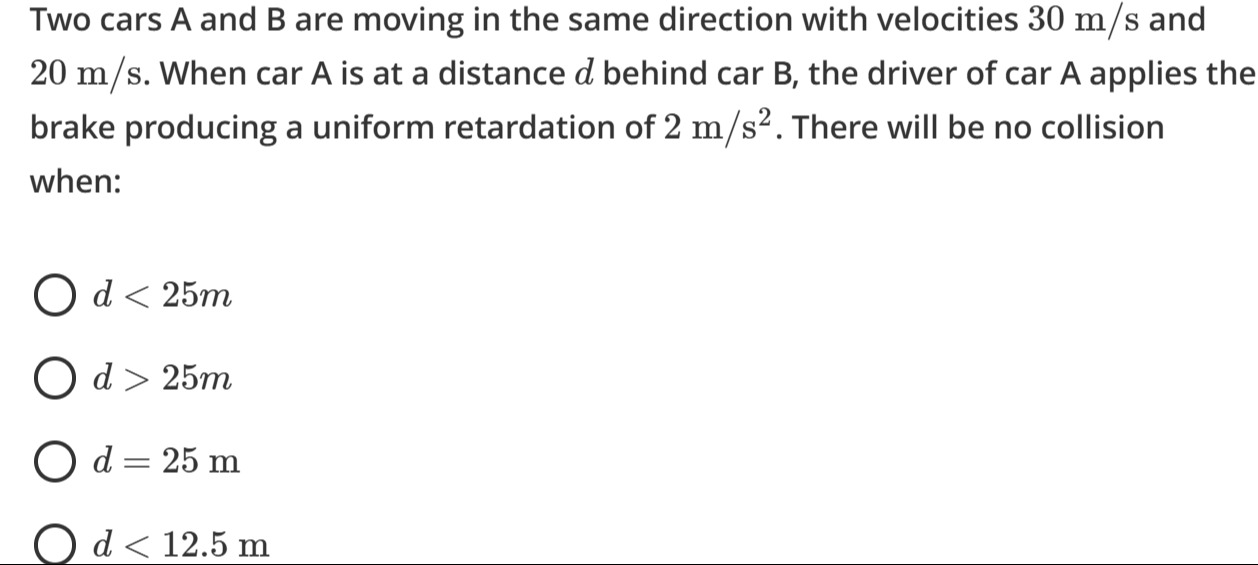Question
Question: Two cars A and B are moving in the same direction with velocities 30 m/s and 20 m/s. When car A is a...
Two cars A and B are moving in the same direction with velocities 30 m/s and 20 m/s. When car A is at a distance d behind car B, the driver of car A applies the brake producing a uniform retardation of 2 m/s². There will be no collision when:

A
d<25m
B
d>25m
C
d=25m
D
d<12.5m
Answer
d>25m
Explanation
Solution
The initial relative velocity of car A with respect to car B is urel=vA−vB=30 m/s−20 m/s=10 m/s. The relative acceleration is arel=−2 m/s2. Using the kinematic equation vrel2=urel2+2arelsrel, where vrel=0 (for stopping), we get: 02=(10 m/s)2+2(−2 m/s2)srel 0=100 m2/s2−4 m/s2⋅srel srel=4 m/s2100 m2/s2=25 m. For no collision, the initial distance d must be greater than the relative stopping distance srel. Therefore, d>25 m.
